New Elantra redesigned from strength
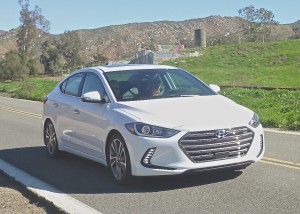
Hyundai’s Elantra won Car of the Year honors at its last redesign, and the new one is better throughout.
By John Gilbert
SAN DIEGO
Hyundai has been on an impressive upwardly-mobile roll ever since the 2011 model year, reaching levels of achievement in design and technology that couldn’t have been predicted. The Sonata has become a midsize mainstay, the Santa Fe and Tucson dependable entries in the sports-utility segments, the Genesis among sports-luxury sedans, the Accent as a subcompact, and the Veloster as a quirky specialty coupe.
There also is the compact Elantra, which was restyled for 2014, amid major upgrades to all the other vehicles coming from the South Korean manufacturer, and the Elantra surprised many even at Hyundai by winning the North American Car of the Year award in 2014, when it was last redesigned, right there among the world-class competition such as Civic, Mazda3, Corolla, Sentra and Jetta.
But now Hyundai has done it. The newest redesign of the compact Elantra for 2017 is so good it might be TOO good! I suggested to Hyundai officials that if the Sonata wasn’t one of my favorite vehicles in the automotive world, I would say the new Elantra is so good I’m not sure the Sonata is still needed.
The Sonata looks good, and the new Elantra looks like a slightly downsized Sonata, so the comparison begs to be made. A bit longer than the current model, considerably stiffer, stunning in its exterior restyling, and with driveability that is vastly improved in engine performance, steering and suspension, the new Elantra rates a “10” in every aspect, including a level of quietness that is startling for a compact.
At the introduction of the new Elantra in San Diego, we pushed various models through their paces — and through some paces we didn’t know the Elantra could reach — in the city, on freeway stretches, and up through all the curves and switchbacks of the adjacent mountain range to the east.
Powertrain choices are both new, starting with a 2.0-liter Atkinson-cycle 4-cylinder that automatically varies engine timing while turning out 147 horsepower and 132 foot-pounds of torque, and EPA fuel economy estimates of 29 city and 38 highway. The alternative is a jewel, a 1.4-liter turbocharged 4-cylinder, with direct injection and only 128 horsepower, while the potency comes from the 156 foot-pounds of torque, which occur over a broad plane from 1,400 to 3,700 RPMs. That range includes virtually any and every speed you might ever want to drive., and fuel economy should be even better than the 2.0.
You can get a 6-speed transmission, and with the 1.4 Turbo you get a 6-speed stick or a high-tech 7-speed dual-clutch transmission with paddle shifters.
The last Elantra won Car of the Year because it had pleasant styling, adequate comfort, peppy performance from the combination of revised 4-cylinder engines and Hyundai’s own house-built transmission. Analysts and critics alike had to agree that the Elantra was surprisingly filled with features unexpected in a compact.
The new Elantra, however, might as well have started with a clean sheet of paper, it’s just that part of the reason it is so impressive is that the Car-of-the-Year Elantra was right there as a target, and was the company’s top-selling vehicle for good measure.
Michael Evanoff joined Hyundai in 2013, right about the time the current Elantra was transformed into its highly-acclaimed facelifted form. He will accept congratulations for that, but acknowledges it was done before he came aboard. He is now the manager of product planning for the Elantra. “I do small-car platforms — the Accent and Elantra,” he said.
The midsize segment, long the most popular among U.S. buyers, has seen consumers swing toward compact sport-utility vehicles, and downsize from large cars to midsize, and from midsize to compacts. The Mazda3 underwent a huge upgrade, forcing Honda to lift the Civic and other manufacturers to follow, but it was the Elantra that had thrown down the challenge to begin with.
The new car moves upstream again. The common thread among all the top compacts is to provide more features than conventional buyers might anticipate, because consumers want neat features even while downsizing. That put the pressure on, because as Hyundai’s top seller, Elantra claimed 30 percent of Hyundai sales volume of cars and SUVs combined, and while compacts boast 34 percent loyalty to the segment, the Elantra ranked No. 2 in loyalty.
Compact buyers used to be practical rather than emotional, but the enjoyment of driving the new Elantra puts “heart” over “head” in the selection, even while the “head” part still remains, with the 10-year, 100,000-mile warranty and vastly improved strength and potential.
“We pretty much started from scratch with the new Elantra,” Evanoff said. “Our objective was to bridge the gap from the smaller Accent to the larger Sonata, and we aimed high for design, technology, interiors, and powertrains. Compacts are a very competitive segment, so we wanted the Elantra to perform better than larger midsize cars, and we wanted to make it the right size.”
The new car has a sporty front end featuring an open, hexagonal grille, contours that flow along the sides and come to an uplifted rear rather than the current model’s slightly dropping rear. It has grown from 179.1 inches in length only to 179.9, and while still a compact it boasts more interior room than the Cadillac CTS, the BMW 3-Series, or the Audi A4, according to Scott Margason, director of product planning.
“The horizontal wide design of the dashboard adds to the feeling of width and stability,” Margason said.
The attractive exterior and interior is underpinned by the strength of high-strength steel, with the A pillars straighten ed and stiffened, and the front and rear suspension much improved, with attention to decreasing noise from roadways, engine, and wind. An increase in high-strength steel and new structural adhesives has helped also.
If those features are surprising in a compact, so is Elantra’s sticker price range. The base SE 2.0 starts at $17,150, or $18,150 with automatic, and moving up to the Tech package gets you up to $22,350. Move up to the Limited and you get the Tech stuff, and upgrading further to Ultimate adds lane-keeping and smart cruise, but it’s difficult to load up an Elantra with everything and spend more than $25,000.
You also can go from 15 to 18 inch wheels, and an 8-inch instead of 7 for the nav screen. After driving the Elantra extensively at the introduction, and tossing it around like a sports car more than a compact sedan, we were equally impressed, but had differing opinions of the car’s best feature. Power? Handling? Steering? The extreme quiet on the road? Give me “all of the above.”
“The 2016 Elantra had 79 percent steel with 21 percent high-strength steel,” said Margason. “The 2017 has 47 percent steel and 53 percent high-strength steel. And where we used to use 10 feet of structural adhesive material, the new car uses 394 feet. With the decrease we’ve gained in wind, road and engine noise, the Elantra is now more quiet than the Civic, Mazda3 and Ford Focus.”
Hyundai engineers also wound up with a 0.27 coefficient of drag for superior aerodynamics. In the competition for the most surprise-at-that-level features, the Elantra will be hard to beat. The available settings for Eco, Normal and Sport adjust engine power, shift points and steering firmness, and the 32-bit electric steering boost is a distinct improvement in most electric-boost systems.
High-intensity discharge lights, with LED daytime running lights and taillights, a hands-free trunk lift, and rear-view camera are obvious assets. Tiny convenience lights on the door handles, a pedestrian-detection radar device with automatic braking that disengages at 6 mph, lane-departure warning, blind-spot detection sensors that work above 20 mph, lane-keeping assist, smart cruise-control, rear cross-traffic detection, dual-charge USB outlets, memory-set seats and mirrors, auto-dim high beams, and leather interior trim are all on the option list.
There is also built-in support for Apple and Android car players, and Sirius XM satellite radio with an amazing feature: If you push a button to change stations, and you come upon a song you really like, you can activate the system to play the whole song from the start. And with all that quiet, the 8-speaker Harmon Infinity system with its subwoofer woofing is icing on the cake.


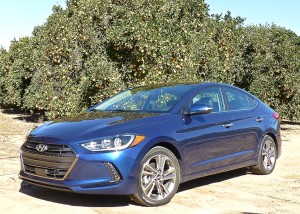
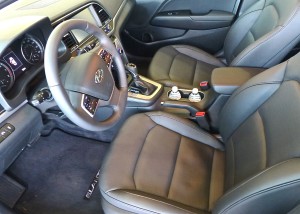
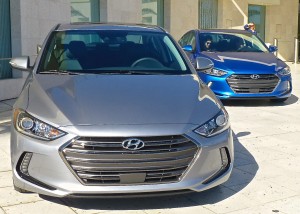

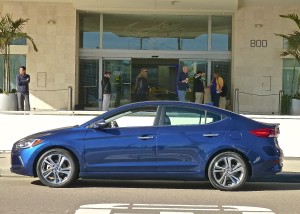
 John Gilbert is a lifetime Minnesotan and career journalist, specializing in cars and sports during and since spending 30 years at the Minneapolis Tribune, now the Star Tribune. More recently, he has continued translating the high-tech world of autos and sharing his passionate insights as a freelance writer/photographer/broadcaster. A member of the prestigious North American Car and Truck of the Year jury since 1993. John can be heard Monday-Friday from 9-11am on 610 KDAL(www.kdal610.com) on the "John Gilbert Show," and writes a column in the Duluth Reader.
John Gilbert is a lifetime Minnesotan and career journalist, specializing in cars and sports during and since spending 30 years at the Minneapolis Tribune, now the Star Tribune. More recently, he has continued translating the high-tech world of autos and sharing his passionate insights as a freelance writer/photographer/broadcaster. A member of the prestigious North American Car and Truck of the Year jury since 1993. John can be heard Monday-Friday from 9-11am on 610 KDAL(www.kdal610.com) on the "John Gilbert Show," and writes a column in the Duluth Reader.